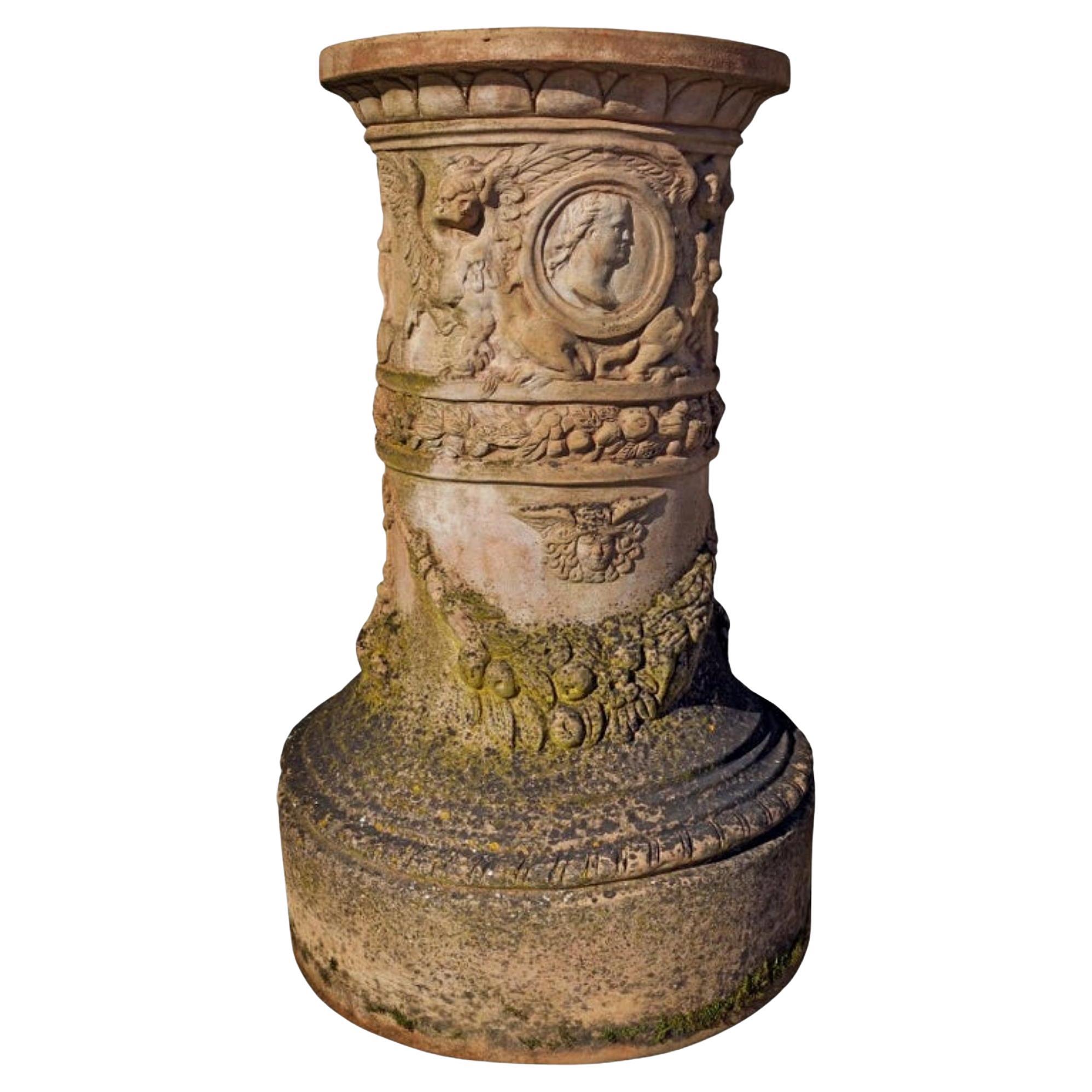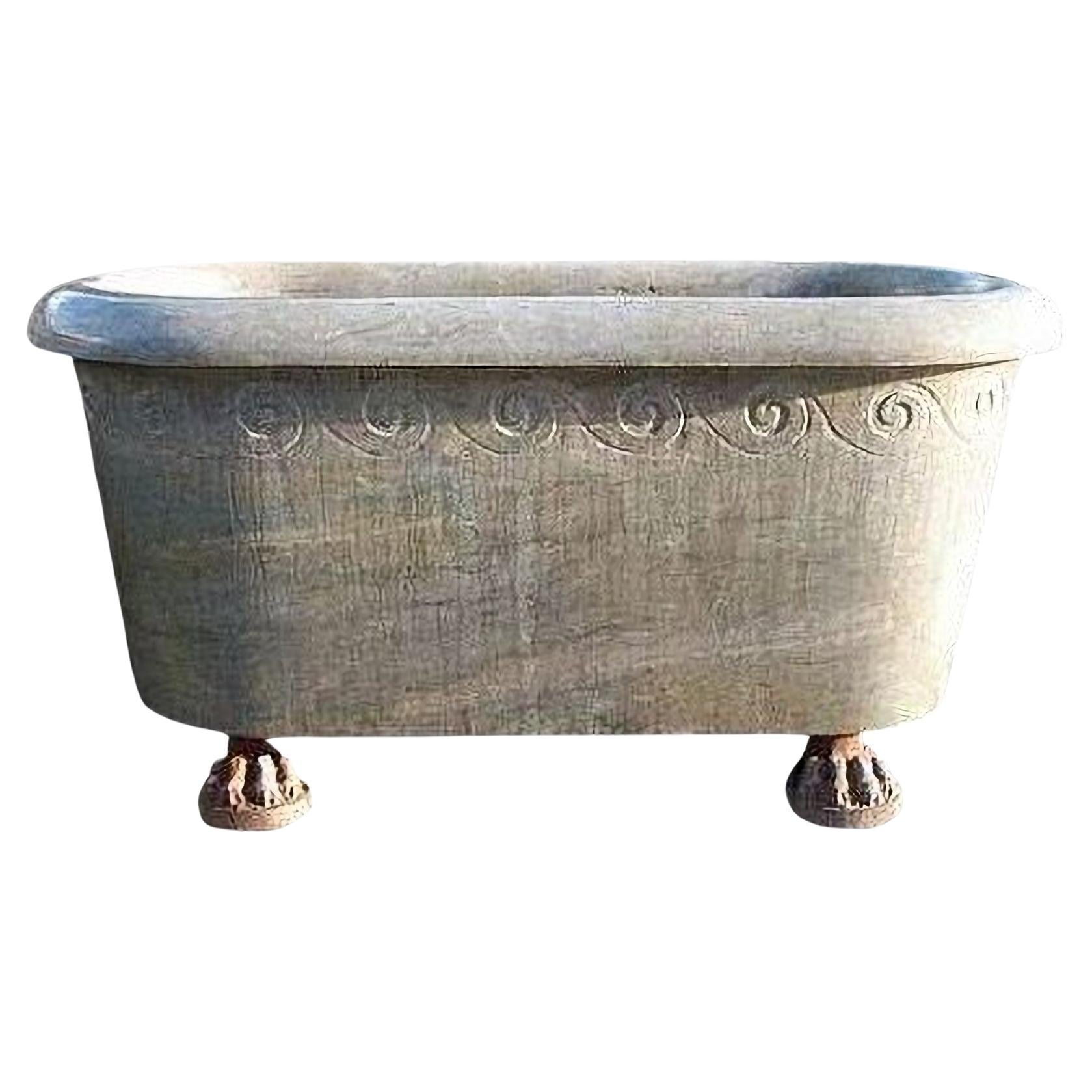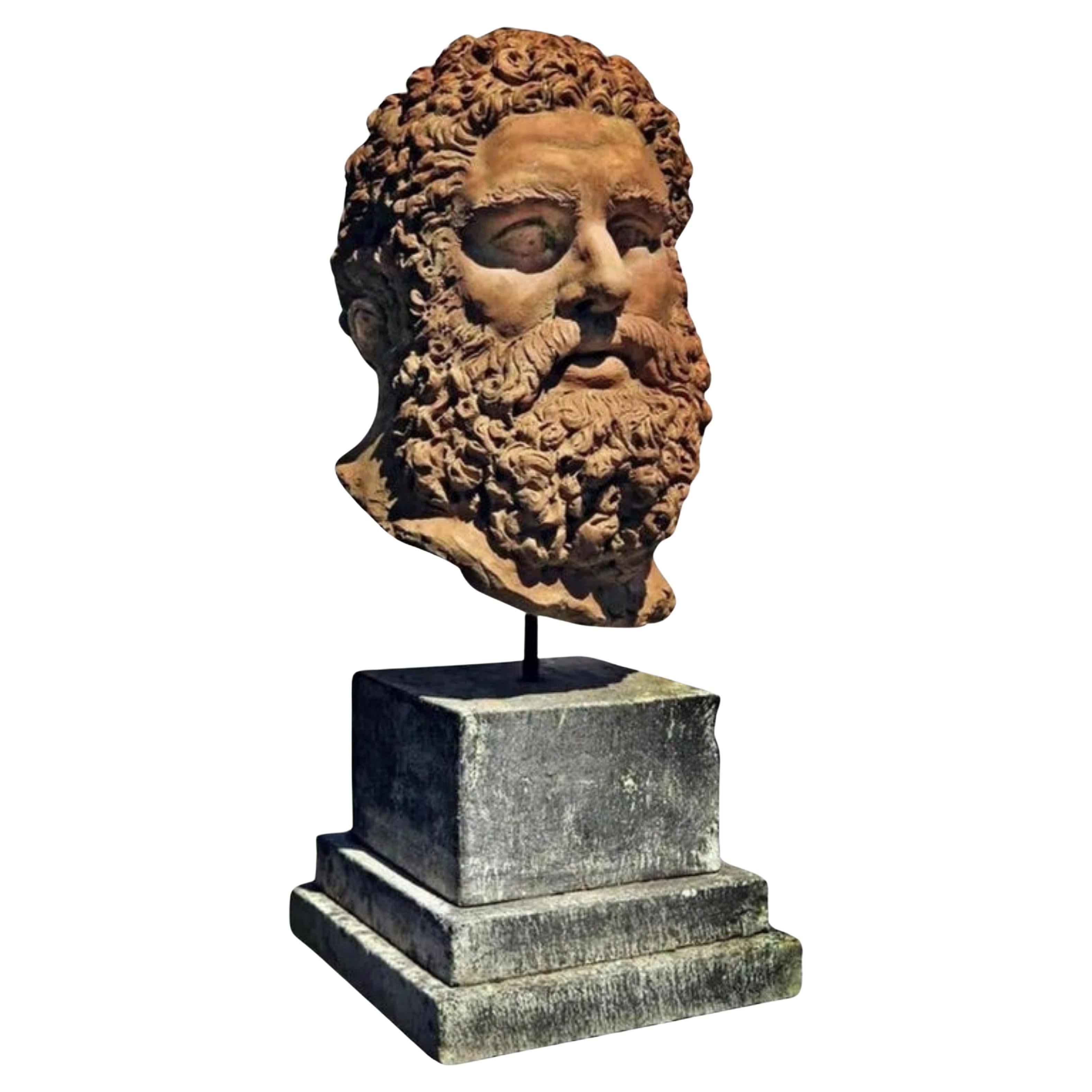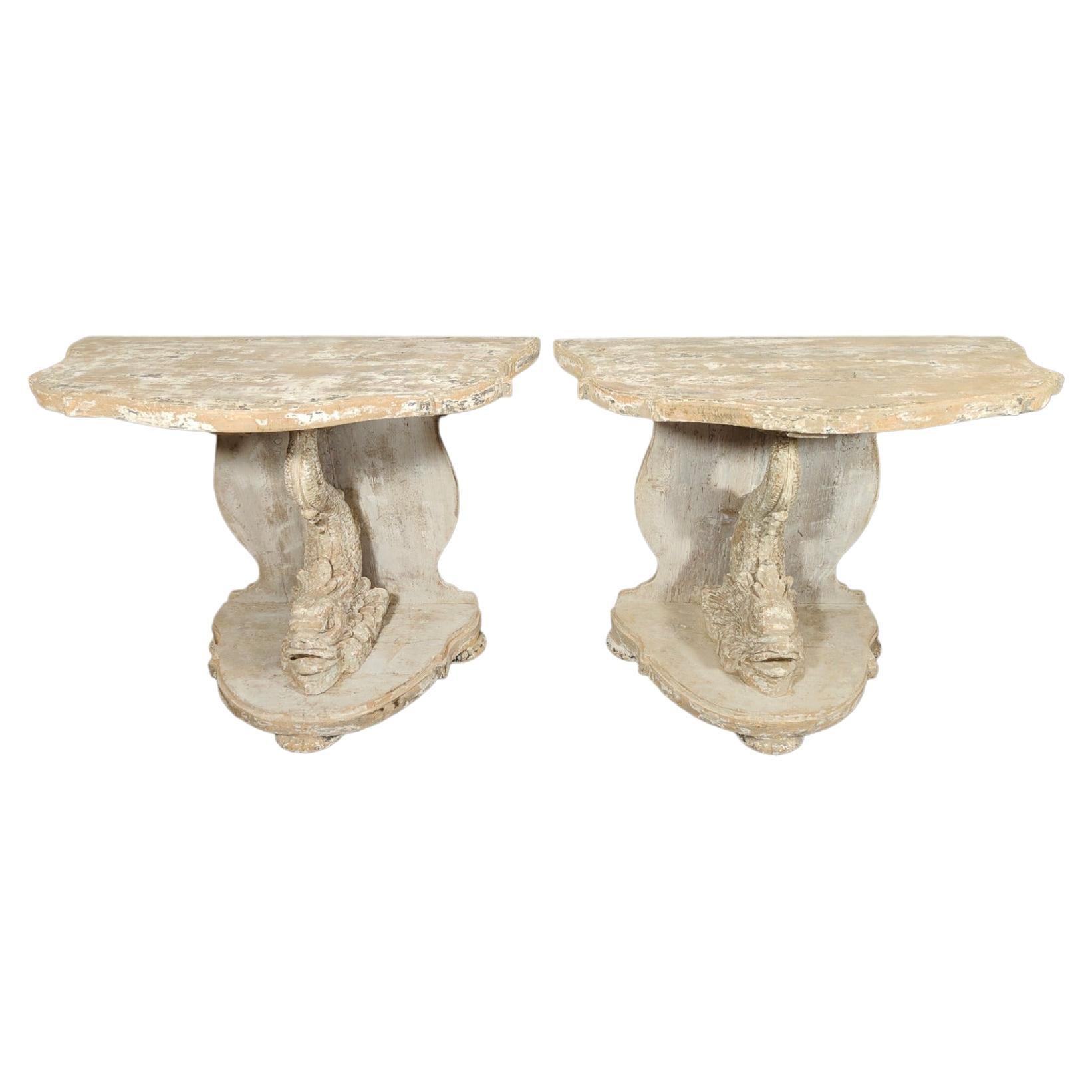Items Similar to Italian Ancient Fountain Fountain, Cementitious Malta End 19th Century
Want more images or videos?
Request additional images or videos from the seller
1 of 6
Italian Ancient Fountain Fountain, Cementitious Malta End 19th Century
About the Item
ANCIENT FOUNTAIN FOUNTAIN - CEMENTITIOUS MALTA end 19th Century
Italy
external dimensions: cm.L110xL75x135H
internal basin cm.L95xL50x23H
HEIGHT 135 cm
WIDTH 110 cm
DEPTH 70 cm
WEIGHT 550 Kg
MATERIAL Cement mortar
Good conditions.
- Creator:Europa Antiques (Artist)
- Dimensions:Height: 53.15 in (135 cm)Width: 43.31 in (110 cm)Depth: 27.56 in (70 cm)
- Style:Baroque (Of the Period)
- Materials and Techniques:
- Place of Origin:
- Period:
- Date of Manufacture:19th Century
- Condition:Wear consistent with age and use. very good condition.
- Seller Location:Madrid, ES
- Reference Number:1stDibs: LU5779231424802
About the Seller
4.9
Platinum Seller
These expertly vetted sellers are 1stDibs' most experienced sellers and are rated highest by our customers.
Established in 2005
1stDibs seller since 2021
222 sales on 1stDibs
Typical response time: <1 hour
- ShippingRetrieving quote...Ships From: Madrid, Spain
- Return PolicyA return for this item may be initiated within 14 days of delivery.
More From This SellerView All
- Italian Square Column in Terracotta End 19th CenturyBy Europa AntiquesLocated in Madrid, ESColumn support for statues and vases Ricceri. Square column in terracotta end 19th century. To be used as a support for vases, busts, sculptures etc. From a cast of the ancient ...Category
Antique Late 19th Century Italian Baroque Figurative Sculptures
MaterialsTerracotta
- WONDERFUL ITALIAN GIANT ANTIQUE STONE BATHTUB end 19th CenturyBy Europa AntiquesLocated in Madrid, ESWONDERFUL ITALIAN GIANT ANTIQUE STONE BATHTUB end 19th Century Bathtub with a beautiful motif taken from the Greek iconography of the Golden Age (400 BC). The feet are in terracotta...Category
Antique 19th Century Italian Baroque Figurative Sculptures
MaterialsStone
- Italian Ancient Large Stone Fountain with Washbasin 19th CenturyBy Europa AntiquesLocated in Madrid, ESAncient large stone fountain with Italian washbasin 19th century Measures: Height 180 cm Width 150 cm Depth 55 cm Thickness 15 cm Weight 180...Category
Antique 19th Century Italian Baroque Fountains
MaterialsStone
- Important Italian Bust "Antonino Pio" End 19th Century Carrara MarbleBy Europa AntiquesLocated in Madrid, ESImportant Italian bust "Antonino Pio" fine 19th Century Marmo di Carrara Measure: H: 76cm perfect conditions Titus Aurelius Fulvo Boyonius Antoninus (Latin: T. Aurelius Fulvus Boion...Category
Antique Late 19th Century Italian Baroque Busts
MaterialsCarrara Marble
- Italian Head of the Farnese Hercules in Terracotta End 19th CenturyBy Europa AntiquesLocated in Madrid, ESHead of the Farnese Hercules in Terracotta end 19th century Italy Base in serena stone Measures: Height 48 cm Length 31 cm Depth 34 cm Weight 28 kg Square base - side x side 33 x 33 ...Category
Antique Late 19th Century Italian Baroque Busts
MaterialsTerracotta
- Italian Wooden Consoles 19th CenturyBy Europa AntiquesLocated in Madrid, ESITALIAN WOODEN CONSOLES DECORATIVE ITALIAN CONSOLES OF THE XIX CENTURY MADE IN SOLID WOOD AND PAINTED WHITE. MEASURES: 115X57X92 CM good condi...Category
Antique 19th Century Italian Baroque Figurative Sculptures
MaterialsWood
You May Also Like
- 19th Century Large Circular Garden Fountain Neptune, Italian Limestone FountainLocated in West Palm Beach, FLMonumental antique Italian three-tiered garden fountain. Four Cariatidi surround the center base raising the water which spells from the waved shells. The second tier is supported by...Category
Antique Early 19th Century Italian Baroque Fountains
MaterialsLimestone
- Italian 19th Century Carved Carrara Marble Figural Fountain Jardinière PlanterBy Giovanni Battista LombardiLocated in Los Angeles, CAA very fine Italian 19th century carved Carrara marble figural fountain "Jardinière" modelled as a standing Putto and a Satyr supporting a sea-sh...Category
Antique 19th Century Italian Baroque Figurative Sculptures
MaterialsCarrara Marble
- Italian Ancient Marble Sculpture Fountain, Late 16th CenturyLocated in Milano, ITSea monster Carrara marble mouth fountain Italy, late 16th century It measures 13.8 x 31.5 x 18.9 in (35 x 80 x 48 cm) State of conservation: some small evident gaps and widespread signs of wear due to outdoor exposure. The gray marks crossing it do not come from restoration, but are rather the natural veins of the marble. This work has some morphological characteristics typically associated with the iconography of the sea monster: an elongated muzzle, sharp teeth, protruding eyes, elongated ears, and a coiled serpent's tail. An in-depth series of studies on artistic depictions of the sea monster attempted to verify how this symbol evolved in antiquity in the European and Mediterranean contexts and how it gradually changed its image and function over time. The iconography itself is mutable and imaginative and its history is rich with cultural and artistic exchange, as well as the overlapping of ideas. This occurred so much that it is difficult to accurately pinpoint the "types" that satisfactorily represent its various developments. However, we can try to summarize the main figures, starting from the biblical Leviathan and the marine creature that swallowed Jonah (in the Christian version, this figure was to become a whale or a "big fish", the “ketos mega”, translation of the Hebrew “dag gadol”). Other specimens ranged from the dragons mentioned in the Iliad (which were winged and had legs) to "ketos” (also from Greek mythology), the terrifying being from whose Latinized name (“cetus”) derives the word "cetacean". See J. Boardman, “Very Like a Whale” - Classical Sea Monsters, in Monsters and Demons in the Ancient and Medieval Worlds, in Papers presented in Honor of Edith Porada, Mainz am Rhein 1987, pp. 73-84). In Italy the monster underwent yet further variations: it can be found in Etruscan art on the front of some sarcophagi representing the companion of souls, while among the Romans we find the “Pistrice” (cited by Plinio in Naturalis Historia PLIN., Nat., II 9, 8 and by Virgilio in Eneide: VERG., Aen., III, 427), which appeared in the shape of a stylized hippocampus or a very large monstrous cetacean and evolved into a hideous being with a dragon's head and long webbed fins. During the Middle Ages, the sea monster was the object of new transformations: at this time, it is often winged, the head is stretched like a crocodile, the front legs are often very sharp fins - sometimes real paws - until the image merges with dragons, the typical figures of medieval visionary spirituality widely found throughout Europe (on this topic and much more, see: Baltrušaitis, J., Il Medioevo fantastico. Antichità ed esotismi nell’arte gotica, Gli Adelphi 1997). In Italy during the 15th and 16th centuries, the revival of classicism - representative of the humanistic and Renaissance periods - led to a different reading of these "creatures". Indeed, the sea monster was also to find widespread use as an isolated decorative motif, especially in numerous fountains and sculptures where dolphins or sea monsters were used as a characterizing element linked to water (on this theme see: Chet Van Duzer, Sea Monsters on Medieval and Renaissance Maps, London, The British library, 2013). From the morphological point of view, the "sea monsters" of this period are mostly depicted as hybrid figures, in which the body of a mythological or real being (a hippocampus, a sea snake, a dolphin), is joined to a head with a rather indistinct appearance. It was usually characterized by large upright ears, an elongated snout, sharp teeth and globular, protruding eyes; a complex and indefinite figure, both from the symbolic point of view and from that of its genesis. The work we are examining is placed as a cross between the medieval sea serpent and the Renaissance dolphin, with stylistic features which recall the snake as often used in heraldry (such as the "snake" depicted in the coat of arms of the Visconti - the lords and then dukes of Milan between 1277 and 1447 - and which, for some, may be derived from the representations of the “Pistrice” that swallowed Jonah). In the search for sources, Renaissance cartography and in particular woodcuts should not be neglected. See for example the monsters of Olaus Magnus, from the editions of the “Historia de gentibus septentrionalibus” (“History of the peoples of the north”) and the natural histories of Conrad Gesner, Ulisse...Category
Antique 16th Century Italian Renaissance Animal Sculptures
MaterialsCarrara Marble
- Italian 19th Century White Carrara Marble Cherub FountainLocated in West Palm Beach, FLA charming Italian 19th century white Carrara marble cherub fountain. The fountain is raised by a square base with terrain-like design below the cheru...Category
Antique 19th Century Italian Figurative Sculptures
MaterialsCarrara Marble
- 19th Century French Marble and Bronze FountainLocated in Essex, MA19th century French marble and bronze fountain. Seated satyr on marble column with marble shell basin. Later cast stone plinth. Wonderful garden ele...Category
Antique Late 19th Century French Louis XV Figurative Sculptures
MaterialsMarble, Bronze
- An articulated artist Dummy, Italy end of 19th century.Located in Milan, ITAn articulated mannequin of a medium-sized painter, with the face to life. The mannequin is sculpted and made of fruit wood. The height-adjustable stand (40” – 55”, diameter 8”), is ...Category
Antique Late 19th Century Italian Figurative Sculptures
MaterialsIron
Recently Viewed
View AllMore Ways To Browse
Antique Italian Living Room
Ancient Italian
Ancient Italy
Ancient Antiques
Antique Maltese
Antique Fountain Basin
Antique Maltese Furniture
Antique Furniture Malta
Antique Italian Fountain
Antique Basin Italian
Malta Antique
Maltese Antique
Ancient Fountains
19th Century Maltese Furniture
Cement Basin
Marble Sphinx
Apollo Bronze
Vintage Erector





